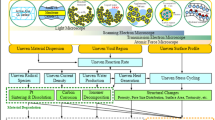Abstract
Carbon dioxide (CO2)-based mixtures are potential working fluids of power cycles, the addition of another substance causes a change in the critical point compared to pure CO2, and the knowledge on critical points is important for the analysis and optimization of power cycles. In the present study, the critical points of binary mixture containing CO2 and one of other substances are studied, including n-alkane (C2–C6), isomer of pentane, alkan-1-ol (C1–C4), hydrofluorocarbon, hydrofluoroolefin and inert gas (xenon). The available experimental data of these binary mixtures are collected from literature and correlated by Chueh–Prausnitz and Redlich–Kister methods, and the applicability of each method is discussed. How the critical point of CO2 varies with the species and proportion of additives is studied by comparative analysis, and the applicability for different CO2 mixtures for meeting the corresponding critical temperature requirement of power cycles is discussed. At last, research suggestion for the critical points of CO2 mixtures that need to be focused on is also presented.








Similar content being viewed by others
References
N. Polikhronidi, R. Batyrova, A. Aliev, I. Abdulagatov, J. Therm. Sci. 28, 394 (2019). https://doi.org/10.1007/s11630-019-1118-4
M.T. White, G. Bianchi, L. Chai, S.A. Tassou, A.I. Sayma, Appl. Therm. Eng. 185, 116447 (2021). https://doi.org/10.1016/j.applthermaleng.2020.116447
L. Irwin, Y. Le Moullec, Science 356, 805 (2017). https://doi.org/10.1126/science.aam8281
J.L. Xu, C. Liu, E.H. Sun, J. Xie, M.J. Li, Y.P. Yang, J.Z. Liu, Energy 186, 115831 (2019). https://doi.org/10.1016/j.energy.2019.07.161
Y.H. Du, G.H. Tian, M. Pekris, Appl. Therm. Eng. 201, 117722 (2022). https://doi.org/10.1016/j.applthermaleng.2021.117722
A.F. Yu, W. Su, X.X. Lin, N.J. Zhou, Nucl. Eng. Technol. 53, 699 (2021). https://doi.org/10.1016/j.net.2020.08.005
G. Shu, L. Shi, H. Tian, S. Deng, X. Li, L. Chang, Appl. Energy 186, 423 (2017). https://doi.org/10.1016/j.apenergy.2016.03.049
J. Sarkar, Energy 34, 1172 (2009). https://doi.org/10.1016/j.energy.2009.04.030
R. Span, W. Wagner, J. Phys. Chem. Ref. Data 25, 1509 (1996). https://doi.org/10.1063/1.555991
W.S. Jeong, Y.H. Jeong, Nucl. Eng. Des. 262, 12 (2013). https://doi.org/10.1016/j.nucengdes.2013.04.006
W.S. Jeong, J.I. Lee, Y.H. Jeong, Nucl. Eng. Des. 241, 2128 (2011). https://doi.org/10.1016/j.nucengdes.2011.03.043
P. Liu, G.Q. Shu, H. Tian, W. Feng, L.F. Shi, Z.Q. Xu, Energy Convers. Manage 198, 111776 (2019). https://doi.org/10.1016/j.enconman.2019.111776
P. Liu, G.Q. Shu, H. Tian, W. Feng, L.F. Shi, X. Wang, Energy Convers. Manage. 208, 112574 (2020). https://doi.org/10.1016/j.enconman.2020.112574
J.Q. Guo, M.J. Li, Y.L. He, J.L. Xu, Appl. Energy 256, 113837 (2019). https://doi.org/10.1016/j.apenergy.2019.113837
G.Q. Shu, Z.G. Yu, H. Tian, P. Liu, Z.Q. Xu, Energy Convers. Manage. 174, 668 (2018). https://doi.org/10.1016/j.enconman.2018.08.069
X.C. Sun, L.F. Shi, H. Tian, X. Wang, Y.H. Zhang, G.Q. Shu, Energy Convers. Manage. 244, 114419 (2021). https://doi.org/10.1016/j.enconman.2021.114419
Y. Yao, L. Shi, H. Tian, X. Wang, X. Sun, Y. Zhang, Z. Wu, R. Sun, G. Shu, Energy (2021). https://doi.org/10.1016/j.energy.2021.122471
A.I. Abdulagatov, G.V. Stepanov, I.M. Abdulagatov, High Temp. 45, 85 (2007). https://doi.org/10.1134/S0018151X07010117
P.L. Chueh, J.M. Prausnitz, Aiche J. 13, 1107 (1967). https://doi.org/10.1002/aic.690130613
R.C. Reid, J.M. Prausnitz, B.E. Poling, The Properties of Gases and Liquids, 4th edn. (McGraw-Hill, New York, 1987), pp. 126–133
O. Redlich, A.T. Kister, Ind. Eng. Chem. 40, 345 (1948). https://doi.org/10.1021/ie50458a036
L. Gil, S.T. Blanco, C. Rivas, E. Laga, J. Fernandez, M. Artal, I. Velasco, J. Supercrit. Fluid 71, 26 (2012). https://doi.org/10.1016/j.supflu.2012.07.008
N. Juntarachat, A. Valtz, C. Coquelet, R. Privat, J.-N. Jaubert, Int. J. Refrig. 47, 141 (2014). https://doi.org/10.1016/j.ijrefrig.2014.09.001
N. Juntarachat, S. Bello, R. Privat, J.-N. Jaubert, Fluid. Phase Equilib. 325, 66 (2012). https://doi.org/10.1016/j.fluid.2012.04.010
S. Horstmann, K. Fischer, J. Gmehling, P. Kolar, J. Chem. Thermodyn. 32(4), 451 (2000). https://doi.org/10.1006/jcht.2000.0611
N. Juntarachat, S. Bello, R. Privat, J.N. Jaubert, J. Chem. Eng. Data 58, 671 (2013). https://doi.org/10.1021/je301209u
J. Liu, Z. Qin, G. Wang, X. Hou, J. Wang, J. Chem. Eng. Data 48, 1610 (2003). https://doi.org/10.1021/je034127q
L.S. Pan, Y.J. Ma, T. Li, H.X. Li, B. Li, X.L. Wei, Energy 179, 454 (2019). https://doi.org/10.1016/j.energy.2019.05.010
I.H. Bell, A. Jager, Fluid Phase Equilib. 433, 159 (2017). https://doi.org/10.1016/j.fluid.2016.10.030
I.H. Bell, U.K. Deiters, Aiche J. 64, 2745 (2018). https://doi.org/10.1002/aic.16074
W.B. Kay, Acc. Chem. Res. 1, 344 (2002). https://doi.org/10.1021/ar50011a004
H. Chen, J.A. Zollweg, W.B. Streett, J. Chem. Eng. Data 7, 157 (1992). https://doi.org/10.1021/je00057a018
A.D. Leu, D.B. Robinson, J. Chem. Eng. Data 33, 313 (1988). https://doi.org/10.1021/je00053a026
B.E. Poling, J.M. Prausnitz, J.P. Oonnell, The Properties of Gases and Liquids, 5th edn. (McGraw-Hill, New York, 2001), p. 2.3-2.4
A. Diefenbacher, M. Türk, J. Chem. Thermodyn. 34, 1361 (2002). https://doi.org/10.1016/s0021-9614(02)00123-4
A. Kordikowski, D.G. Robertson, A.I. Aguiar-Ricardo, V.K. Popov, S.M. Howdle, M. Poliakoff, J. Phys. Chem. 100, 9522 (1996). https://doi.org/10.1021/jp960010f
M.H. Yang, Energy Convers. Manage. 151, 86 (2017). https://doi.org/10.1016/j.enconman.2017.08.059
B.M. Dai, C.B. Dang, M.X. Li, H. Tian, Y.T. Ma, Int. J. Refrig. 56, 1 (2015). https://doi.org/10.1016/j.ijrefrig.2014.11.009
B.M. Dai, M.X. Li, Y.T. Ma, Energy 64, 942 (2014). https://doi.org/10.1016/j.energy.2013.11.019
A. Yu, W. Su, L. Zhao, X. Lin, N. Zhou, Energies 13, 1741 (2020). https://doi.org/10.3390/en13071741
J.Q. Guo, M.J. Li, J.L. Xu, J.J. Yan, K. Wang, Energy 173, 785 (2019). https://doi.org/10.1016/j.energy.2019.02.008
V.G. Martynets, N.V. Kuskova, E.V. Matizen, V.F. Kukarin, J. Chem. Thermodyn. 31, 191 (1999). https://doi.org/10.1006/jcht.1998.0438
N. Ribeiro, T. Casimiro, C. Duarte, M.N. da Ponte, A. Aguiar-Ricardo, M. Poliakoff, J. Phys. Chem. B 104, 791 (2000). https://doi.org/10.1021/jp991953q
Acknowledgements
This work was supported by a Grant from the National Natural Science Foundation of China (No. 52022066).
Author information
Authors and Affiliations
Corresponding authors
Additional information
Publisher's Note
Springer Nature remains neutral with regard to jurisdictional claims in published maps and institutional affiliations.
Supplementary Information
Below is the link to the electronic supplementary material.
Rights and permissions
About this article
Cite this article
Sun, R., Tian, H., Wu, Z. et al. Comparative Study on Critical Points of Carbon Dioxide-Based Binary Mixtures. Int J Thermophys 43, 122 (2022). https://doi.org/10.1007/s10765-022-03048-3
Received:
Accepted:
Published:
DOI: https://doi.org/10.1007/s10765-022-03048-3




